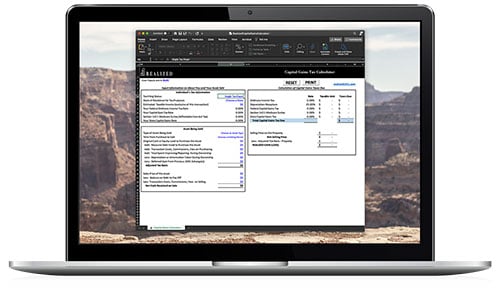
Among the attributes of real estate investing that appeal to investors are the tax advantages that investors can use. First, the investor can deduct the costs of owning, maintaining, and operating rental property. This ability helps to reduce the taxes you pay on income from rental property. Deductible expenses include mortgage interest, property taxes, maintenance and repairs (not improvements), marketing, and similar items.
Second, depending on the level of your effort in managing property, you may be able to deduct passive losses. You must meet the participation and income requirements to be eligible for these loss deductions.
A frequently asked question is whether investors can deduct the costs of obtaining a loan or refinancing the mortgage. While refinancing closing costs on rental property are not deductible in the year you refinance, they can be amortized and deducted over the life of the loan. This is known as depreciation.
How does depreciation work?
Depreciation is a means by which the IRS allows investors to recoup value loss from wear and tear on an asset. For example, office equipment, vehicles, machinery, and other durable equipment have a schedule allowing the cost to be spread out over five or seven years, depending on the type of asset. For residential rental property, the depreciation period is 27.5 years, while for commercial buildings and nonresidential property, the depreciation period is 39 years.
For example, suppose you own a residential rental that has a cost basis of $400,000. The annual depreciation only applies to the structures and improvements, not the land, so you must reduce the depreciable amount by the land value. The reason for this rule is that land does not wear out. For this example, assume the value of the land is $50,000, leaving $350,000 to depreciate over 27.5 years. The investor can deduct a depreciation amount of $12,727.27 annually.
$350,000/27.5 = $12,727.27
Changes in cost basis result in changes in allowable depreciation
Remember, the depreciation allowed is based on the property’s cost basis. The initial cost basis for an investment property is the amount paid, the buyer’s closing costs, and the cost of any improvements made to the property. For example, suppose you pay $500,000 for a residential rental and determine that the land is worth $100,000, reducing the depreciable basis to $400,000. Suppose you had $50,000 in closing expenses and made $150,000 of improvements. At that point, the cost basis is $600,000.
What if I decide to refinance the mortgage?
Refinancing may be attractive to an investor for several reasons. Sometimes, interest rates fall, or the investor’s financial status may qualify for a lower rate. If the property’s value has increased, the investor may want to access the equity to improve the property or invest in other assets. As with an initial purchase, closing costs may include points (loan origination fees), title and recording fees, appraisal costs, and taxes.
Remember that these refinance closing costs are not deductible for rental property owners. However, as with the initial purchase closing costs, these closing costs are added to the basis and deductible as depreciation. Using the prior example, the investor started with an adjusted basis of $600,000. If the investor has an additional $25,000 in closing costs for refinancing, the adjusted basis becomes $625,000.
Don’t forget about depreciation recapture
The depreciation deduction repays investors for the loss in value over the period a property or other asset is used. However, in reality, property values often increase, resulting in a capital gain due to the higher value. If you sell a property for a higher price than your basis, the IRS wants to regain some of the deductions it granted. It does so through depreciation recapture. When an investor sells a property for more than their basis, they must repay 25% of the amount they have depreciated during their ownership. For example, if the investor claimed $100,000 in depreciation while holding an asset, they must repay $25,000, along with any applicable capital gains taxes.
This material is for general information and educational purposes only. Information is based on data gathered from what we believe are reliable sources. It is not guaranteed as to accuracy, does not purport to be complete and is not intended to be used as a primary basis for investment decisions. It should also not be construed as advice meeting the particular investment needs of any investor.
Realized does not provide tax or legal advice. This material is not a substitute for seeking the advice of a qualified professional for your individual situation.
The income stream and depreciation schedule for any investment property may affect the property owner's income bracket and/or tax status. An unfavorable tax ruling may cancel deferral of capital gains and result in immediate tax liabilities.
All real estate investments have the potential to lose value during the life of the investment. All financed real estate investments have the potential for foreclosure.
Hypothetical examples shown are for illustrative purposes only.


